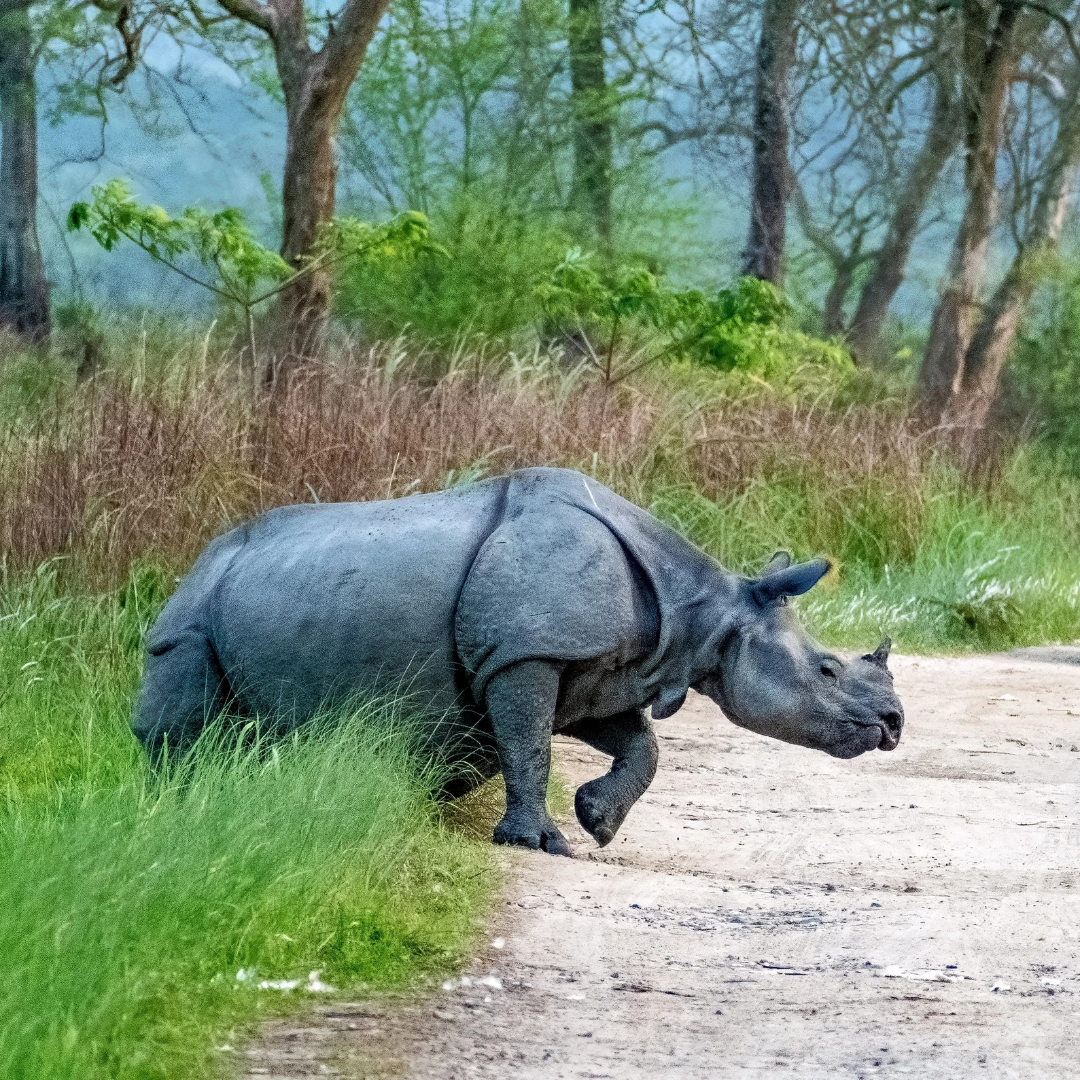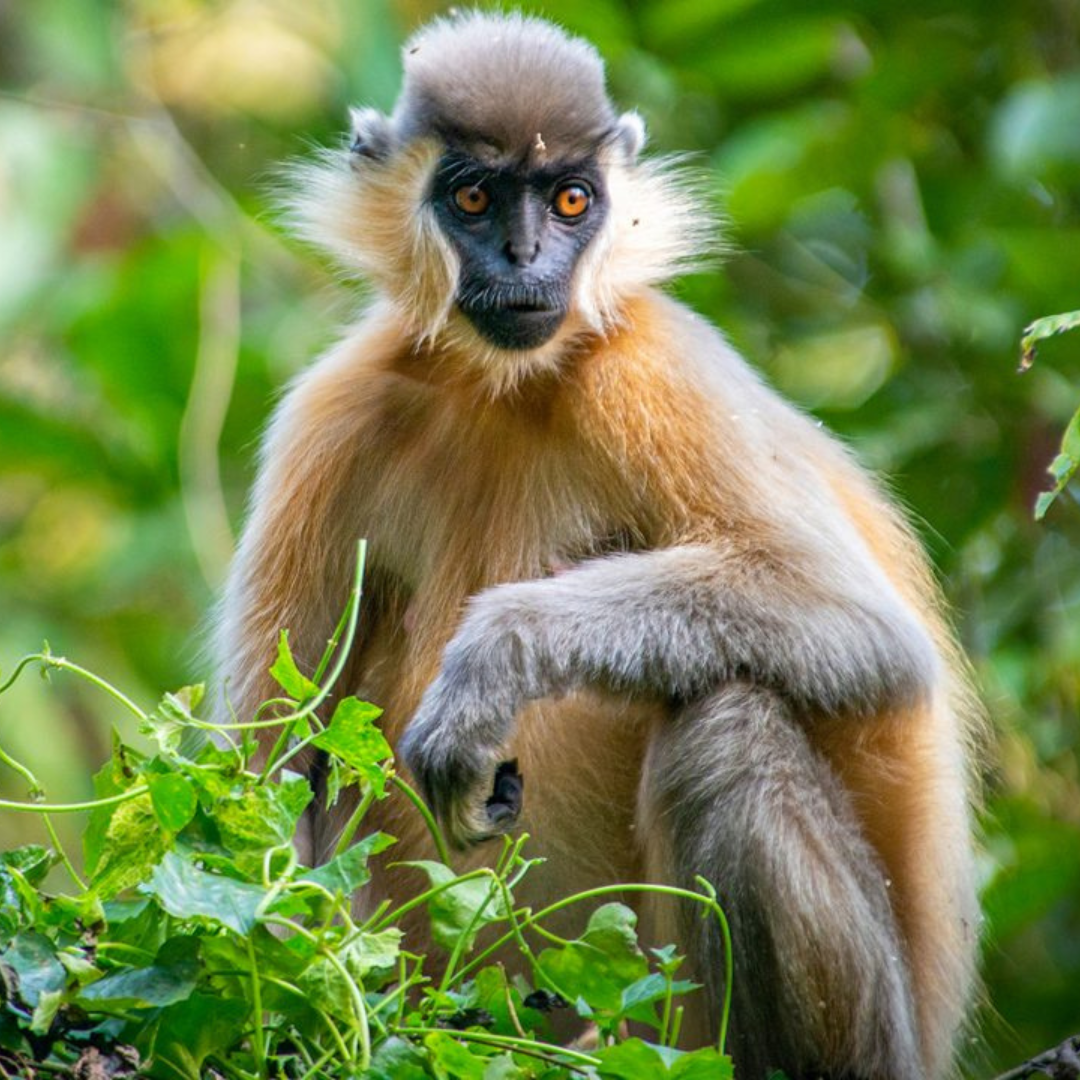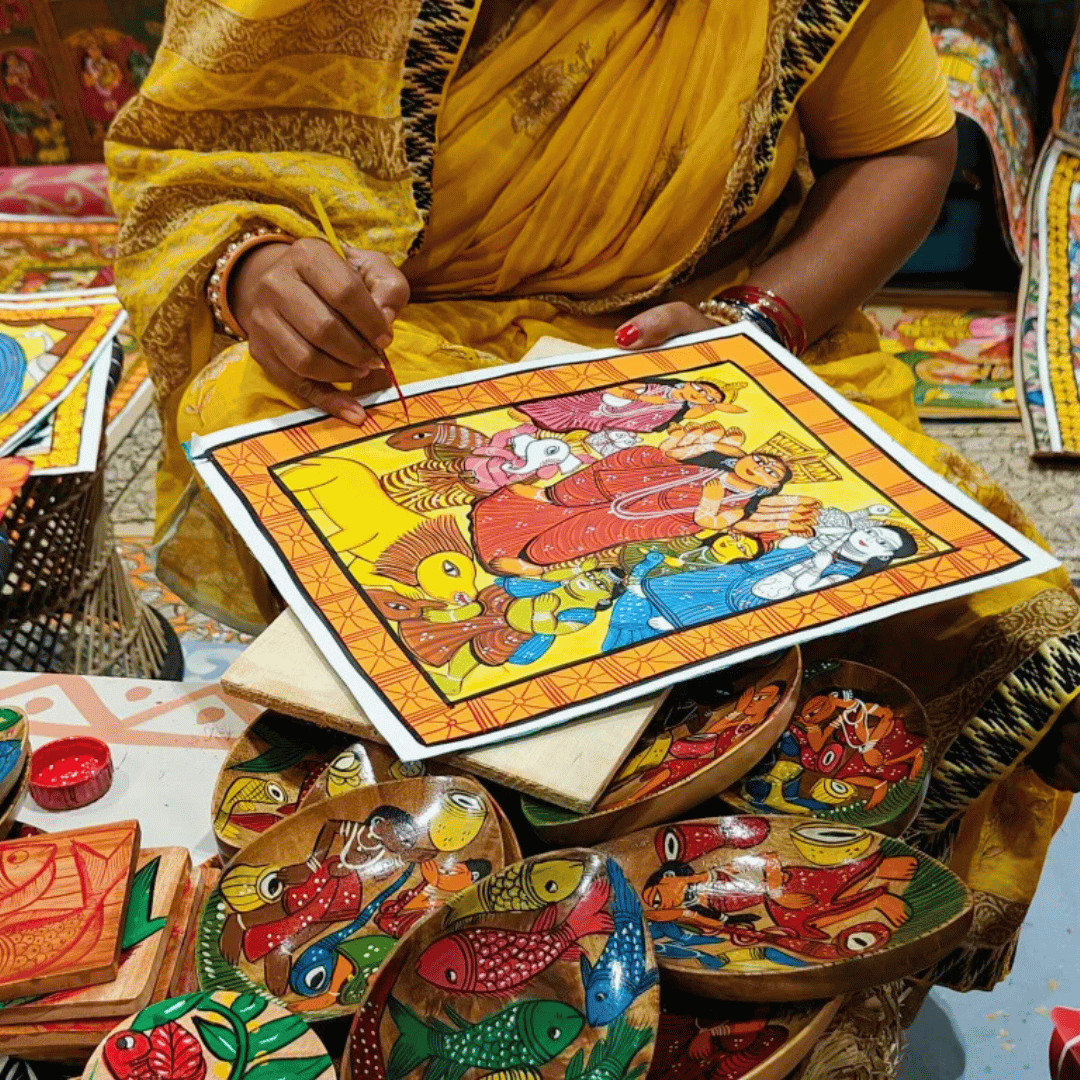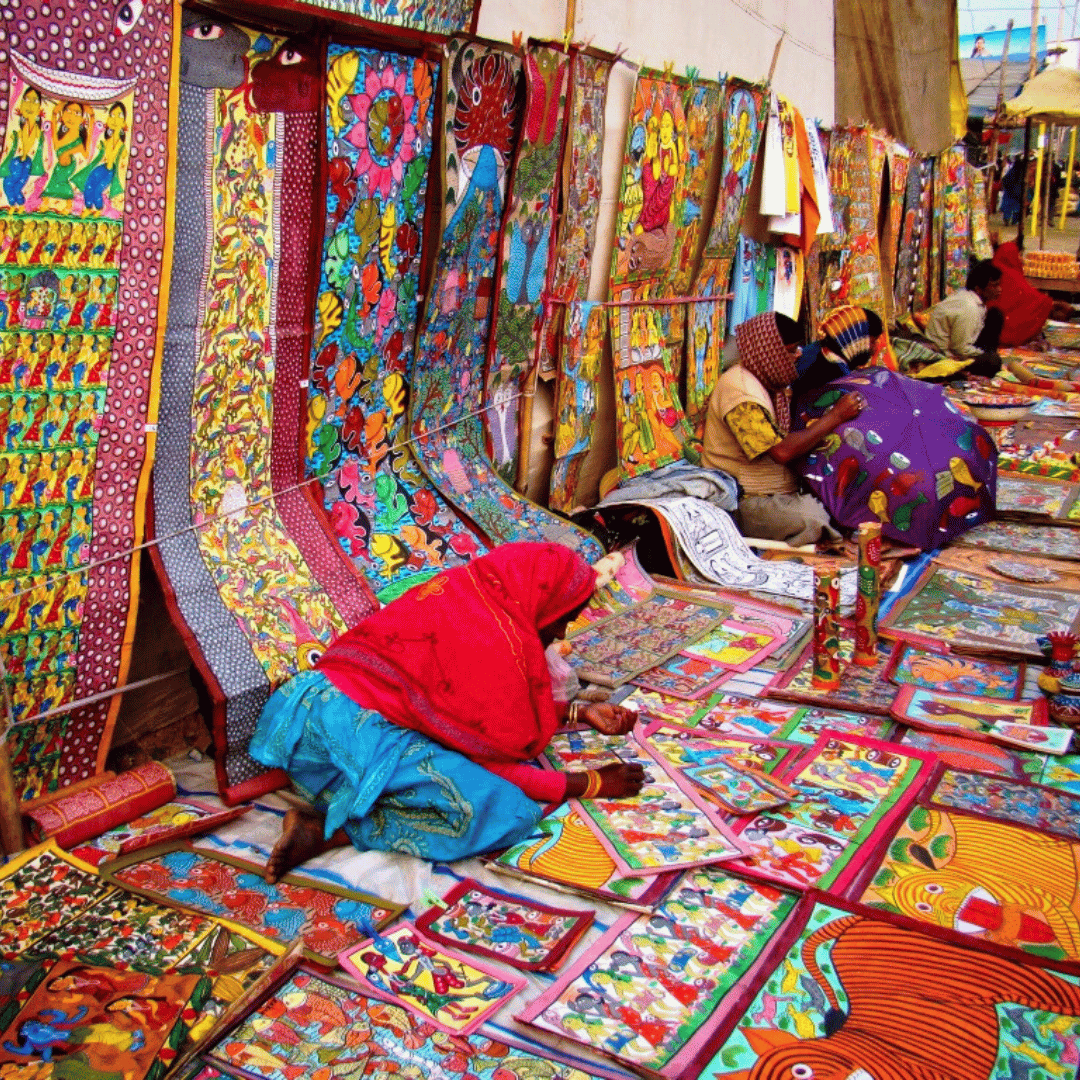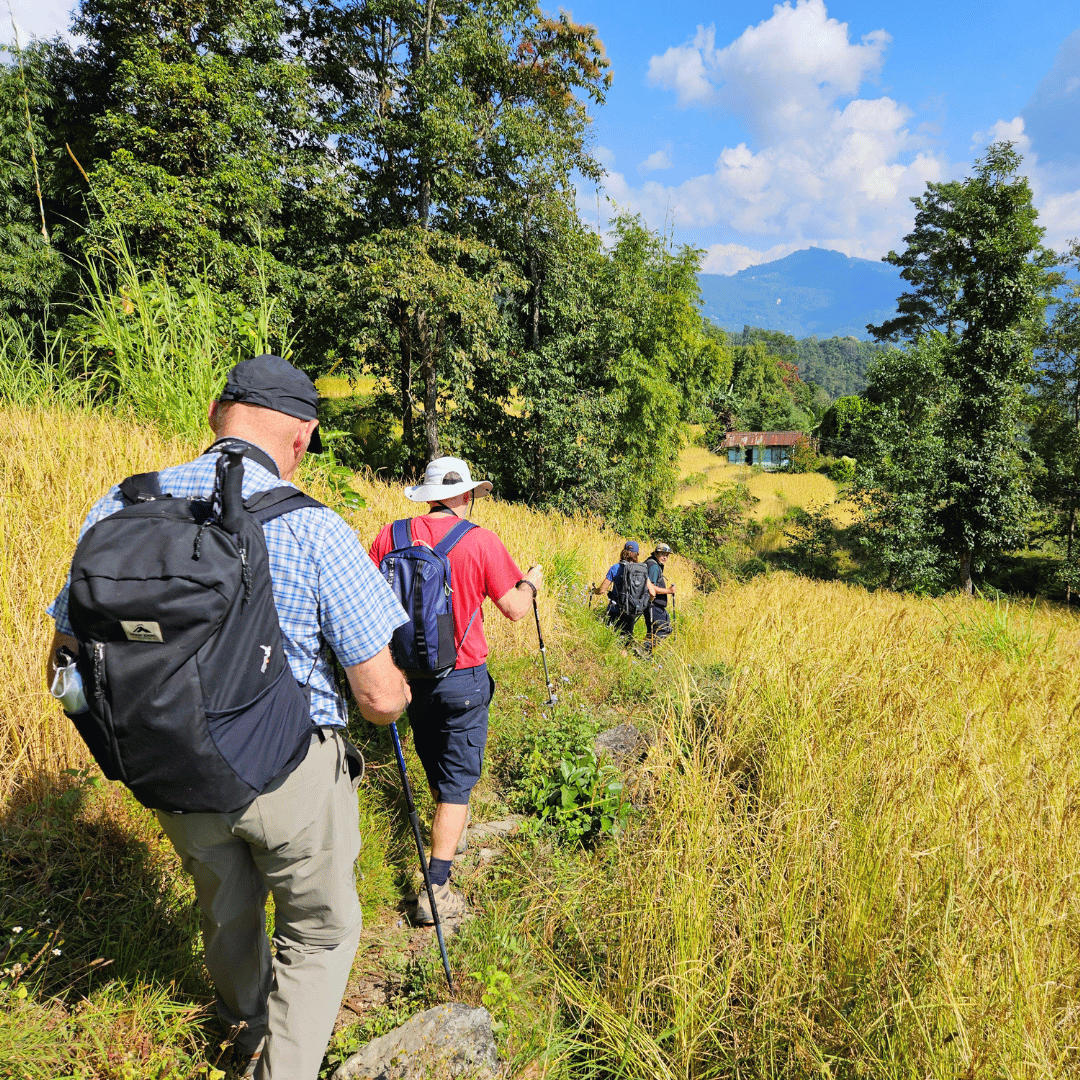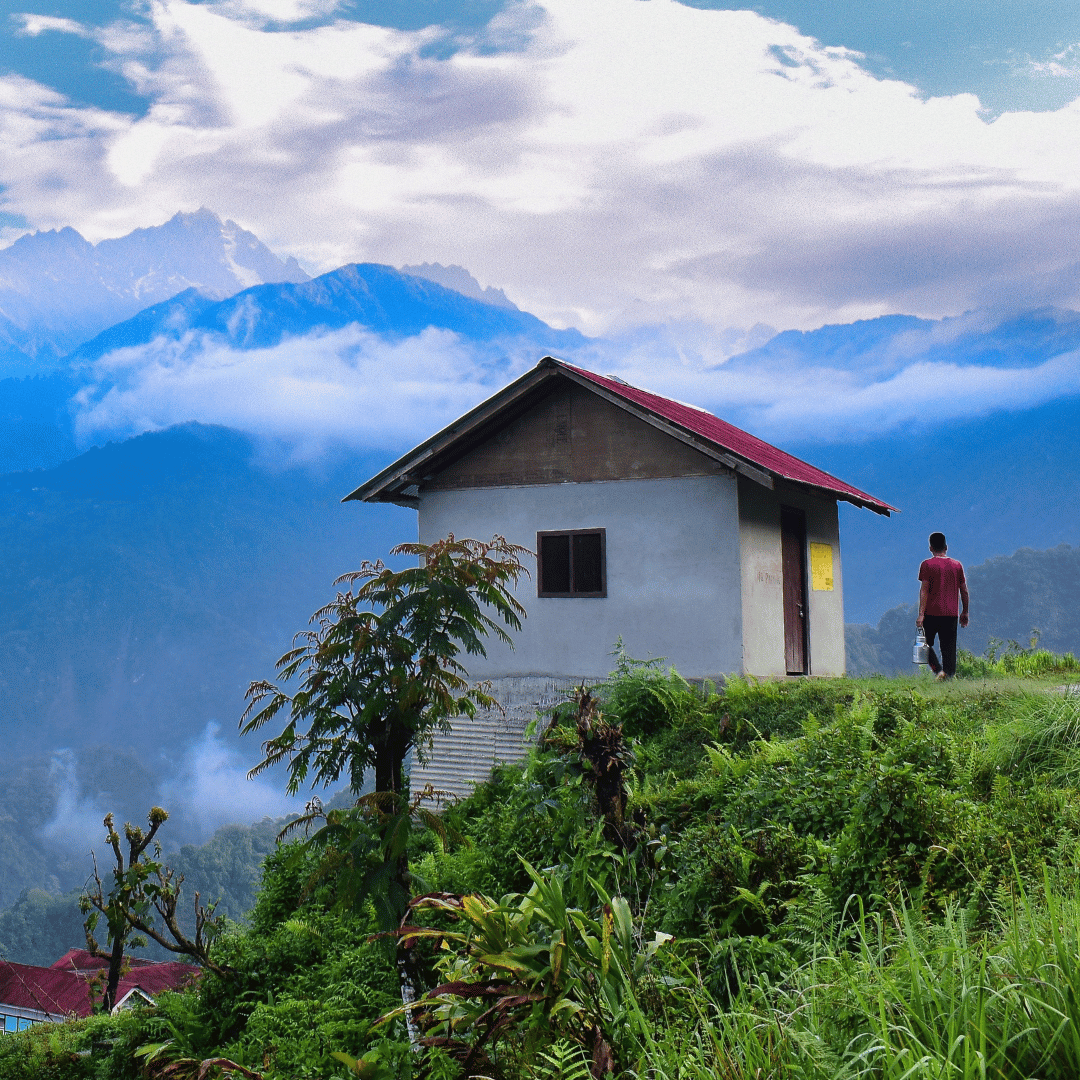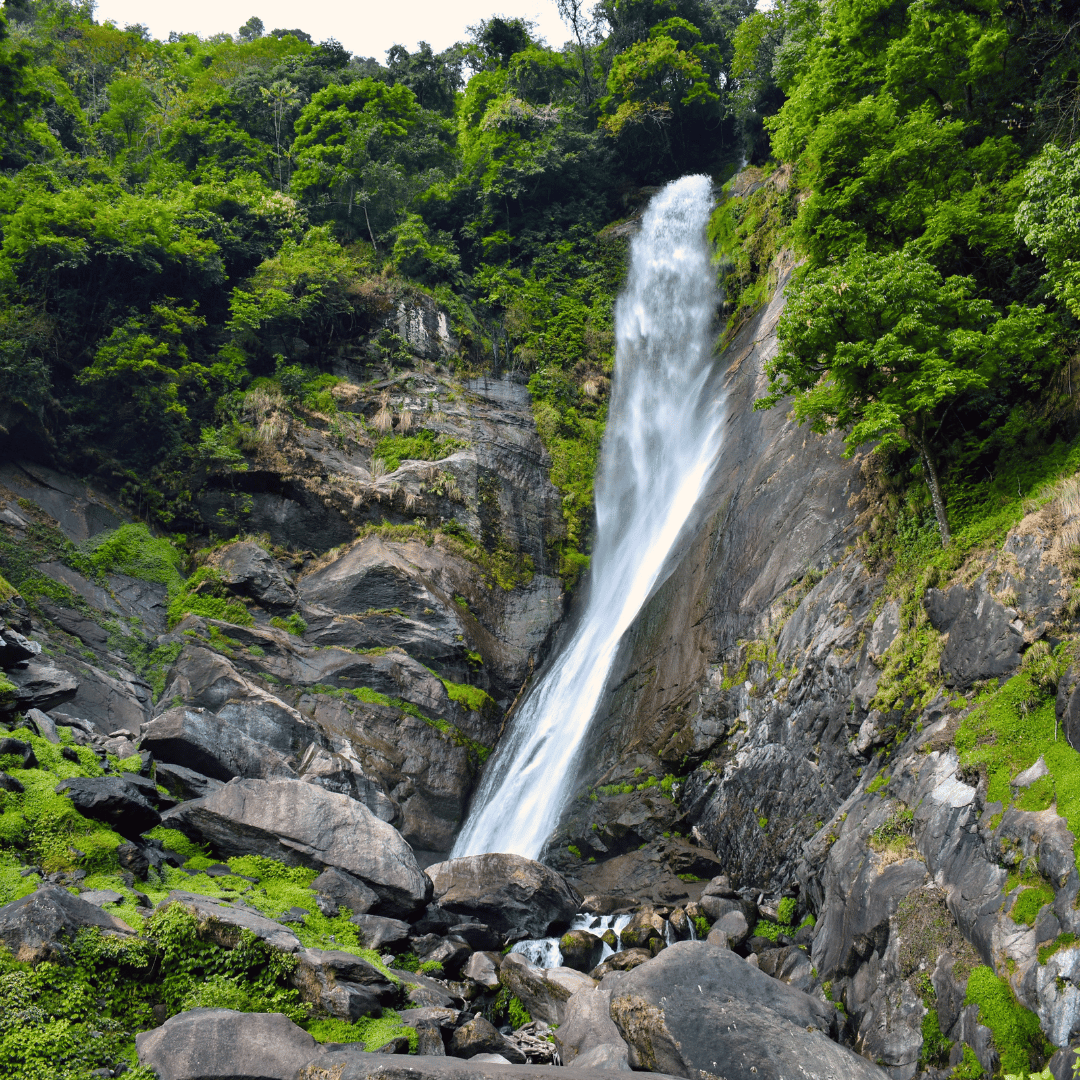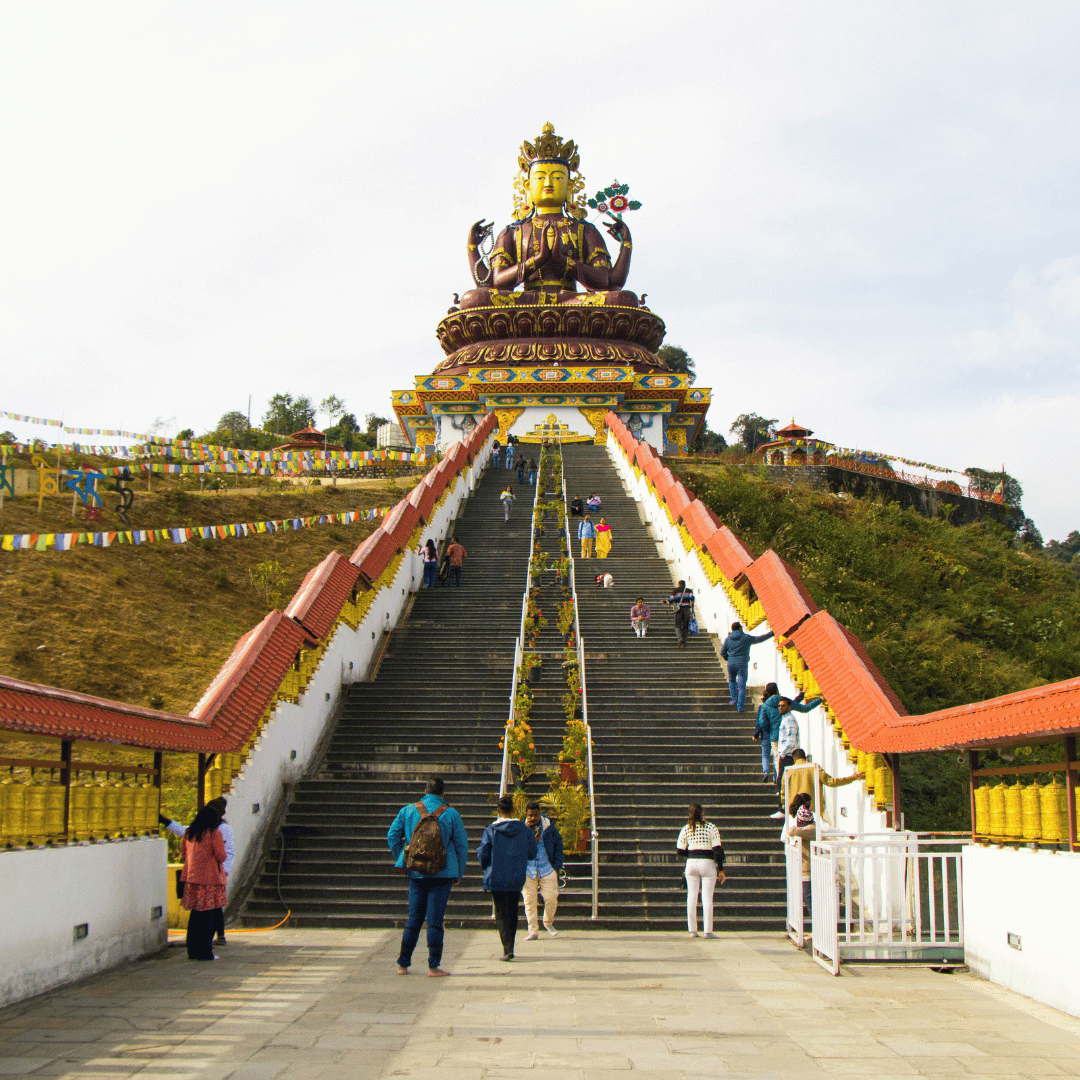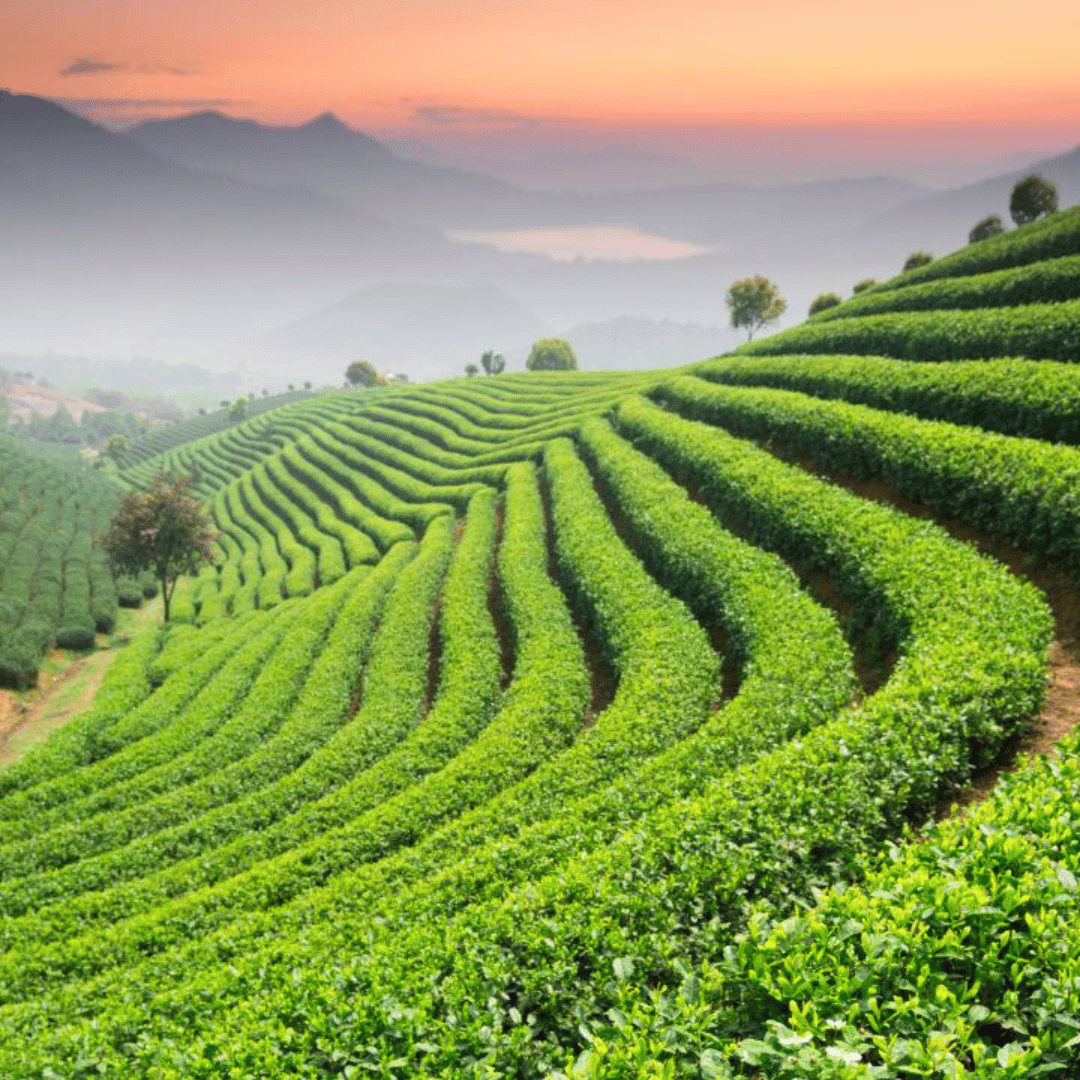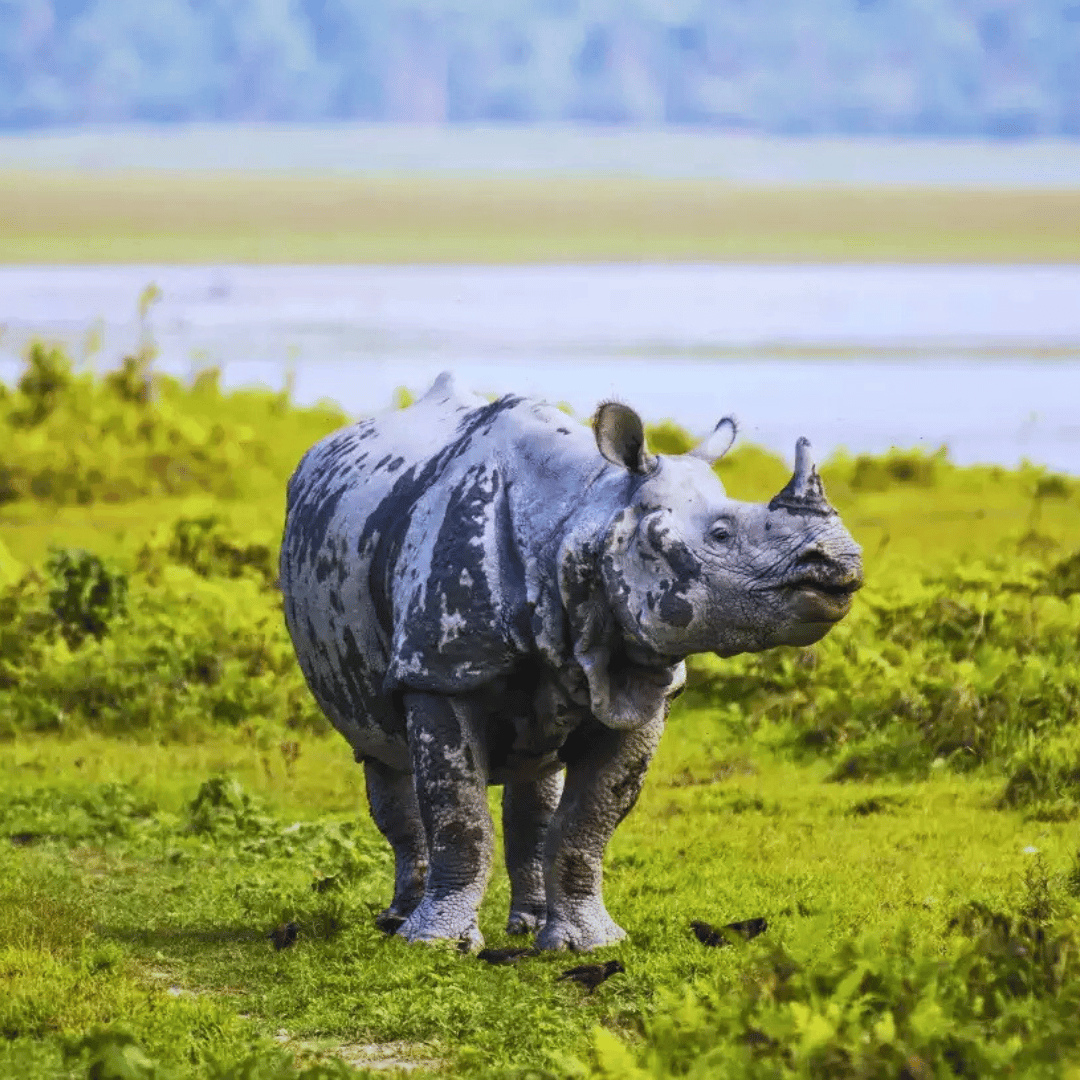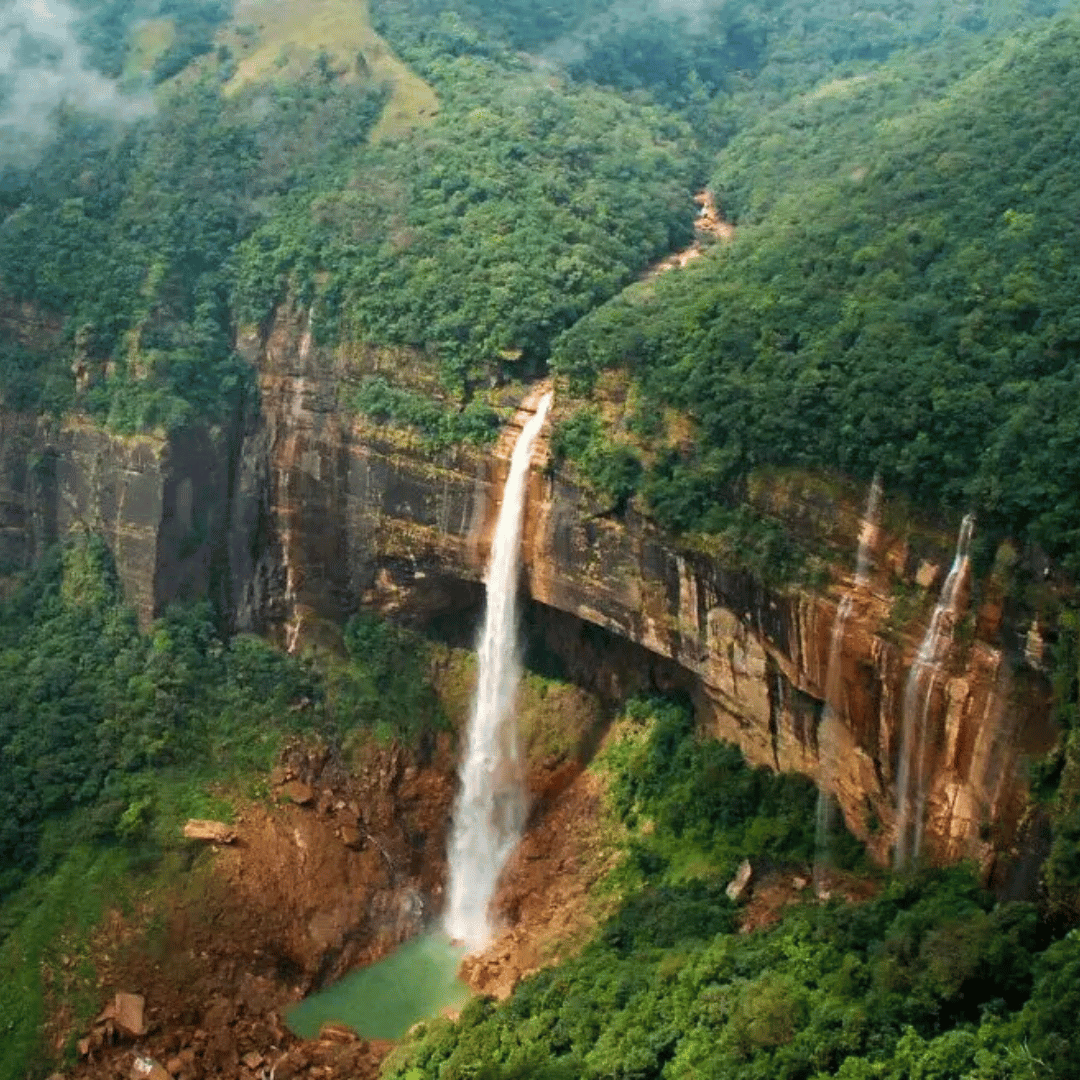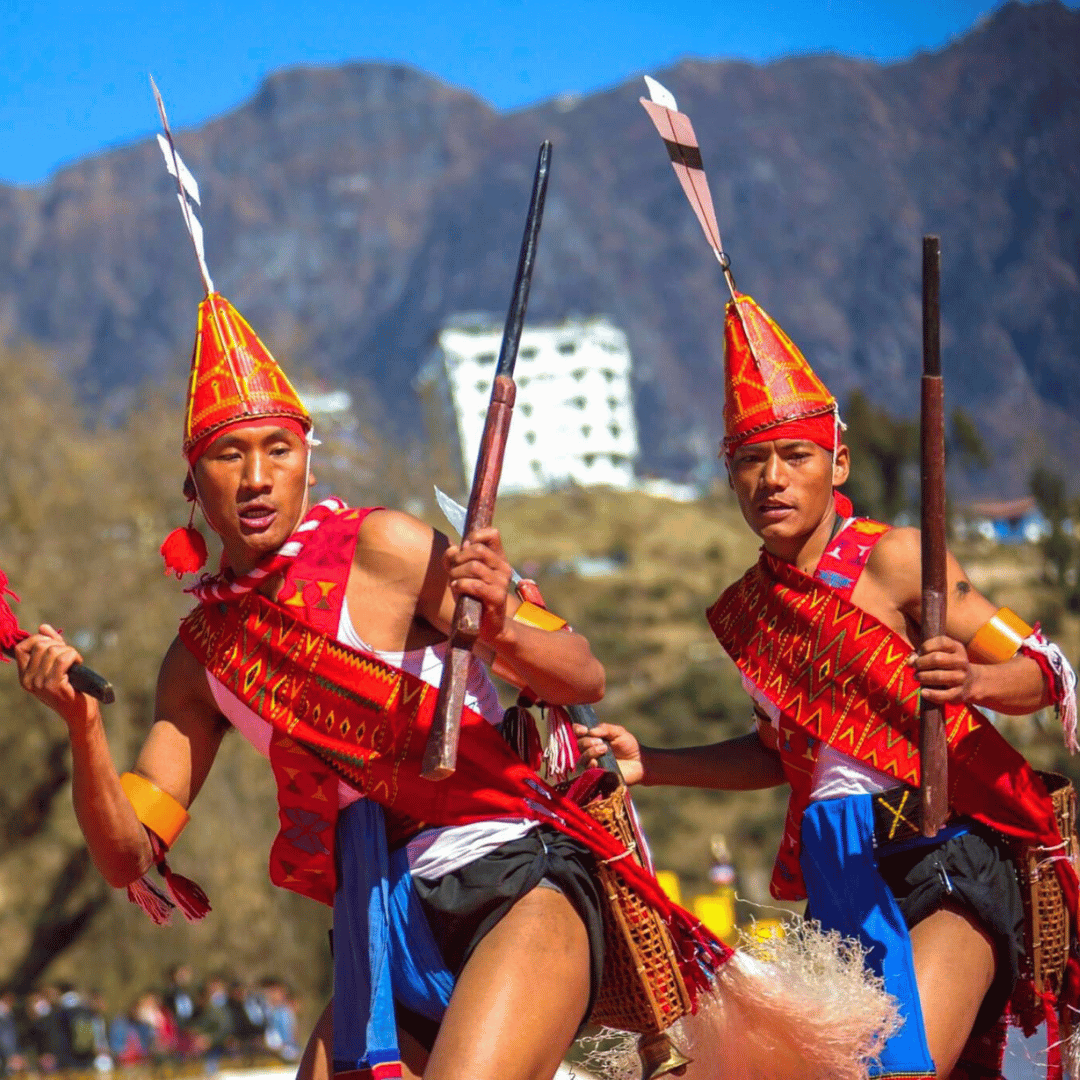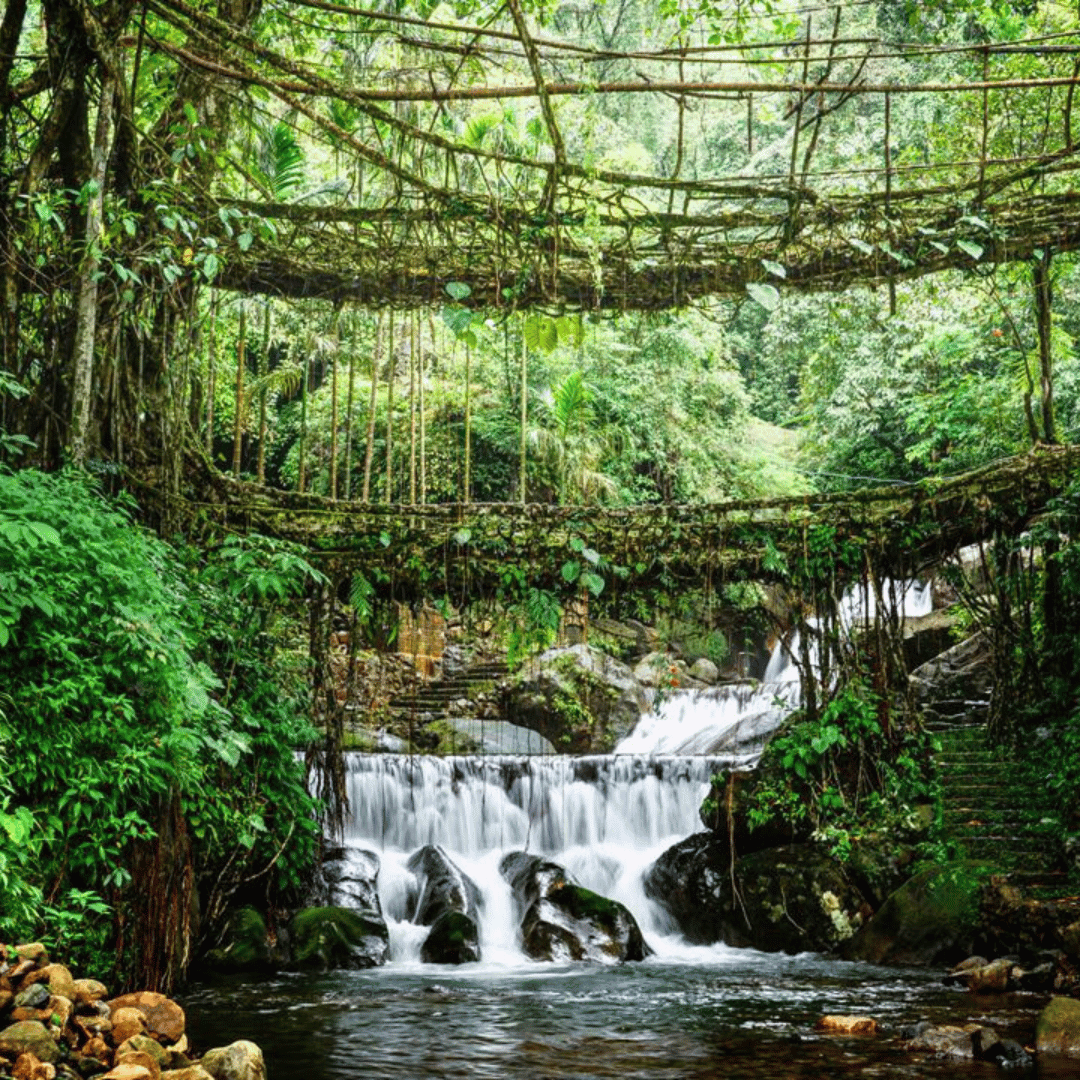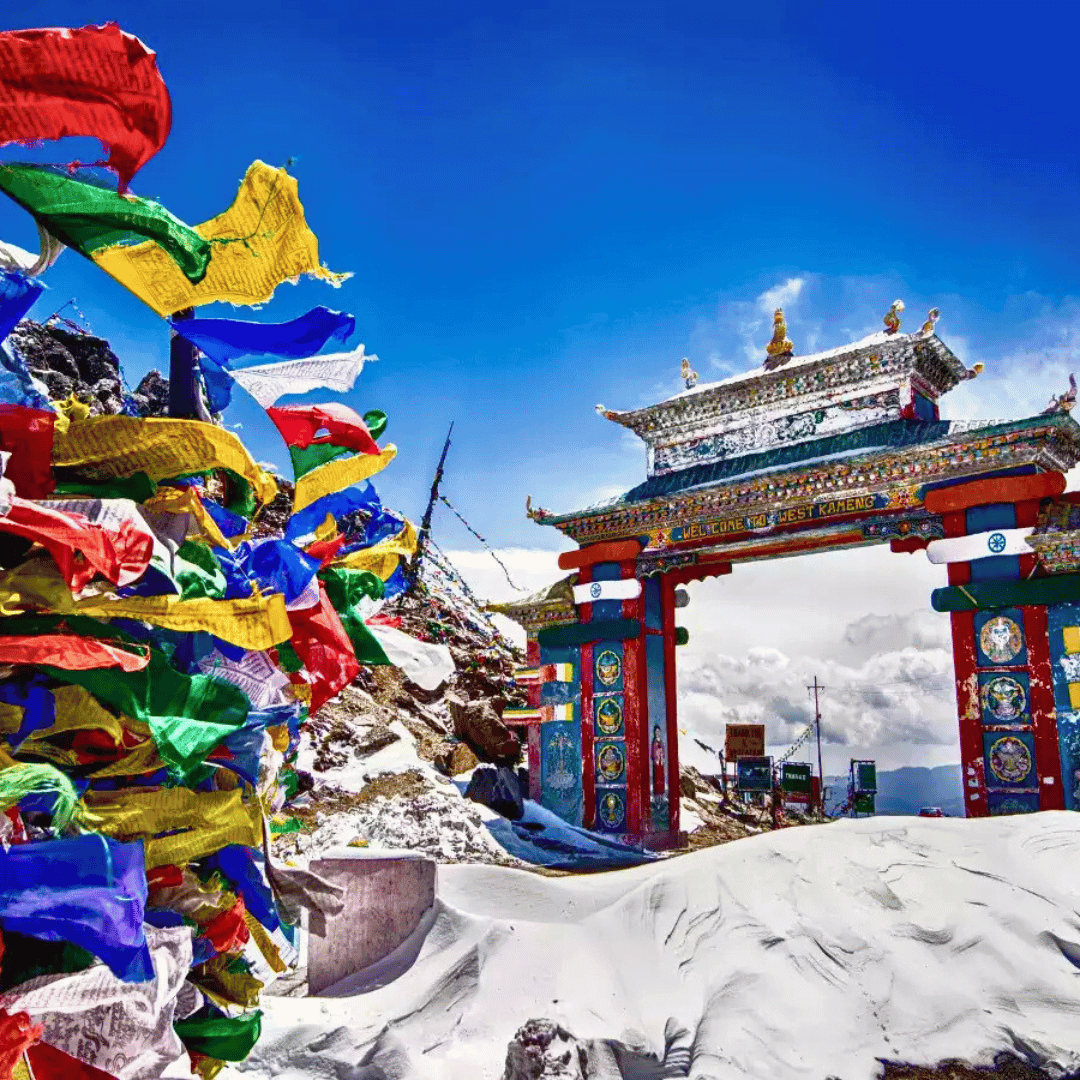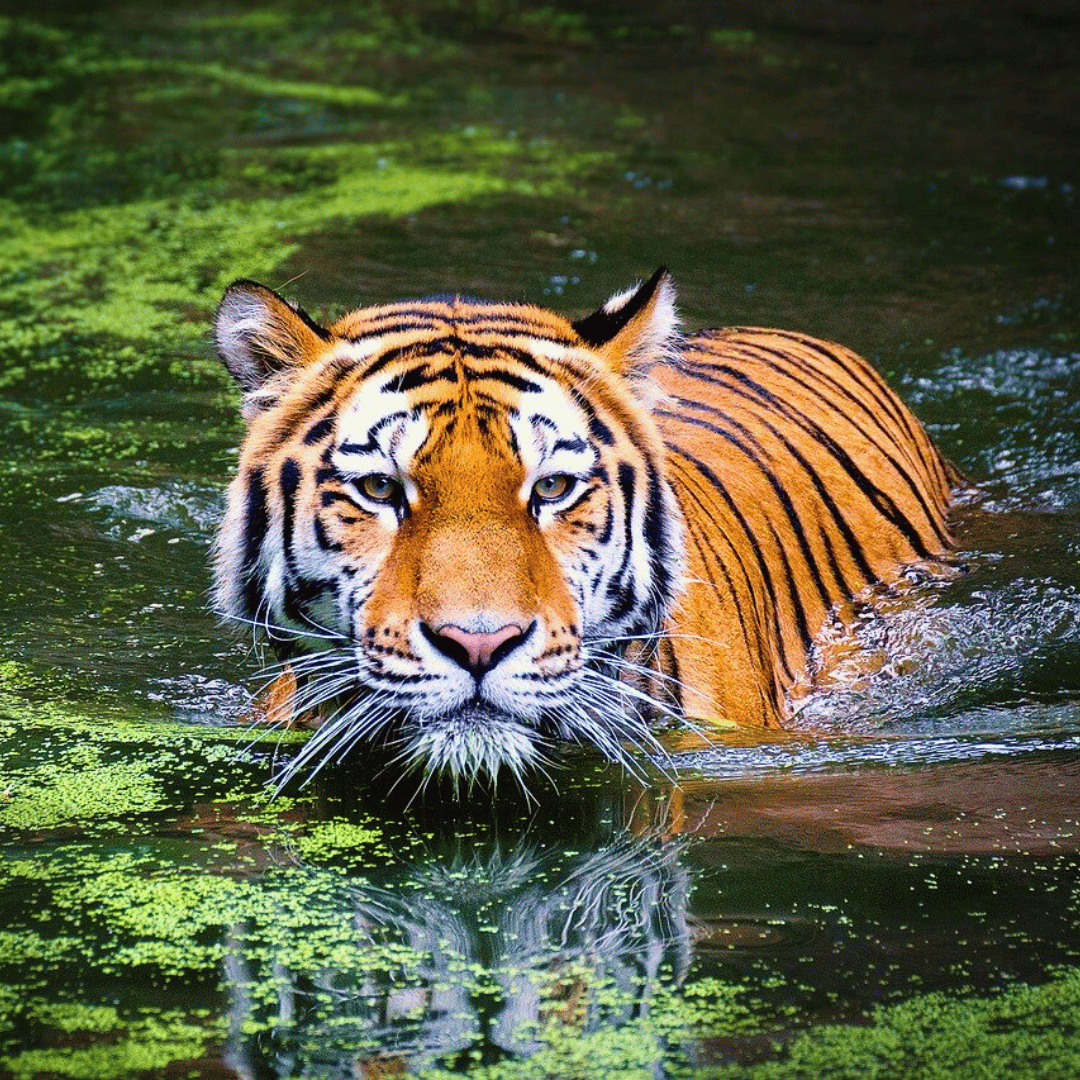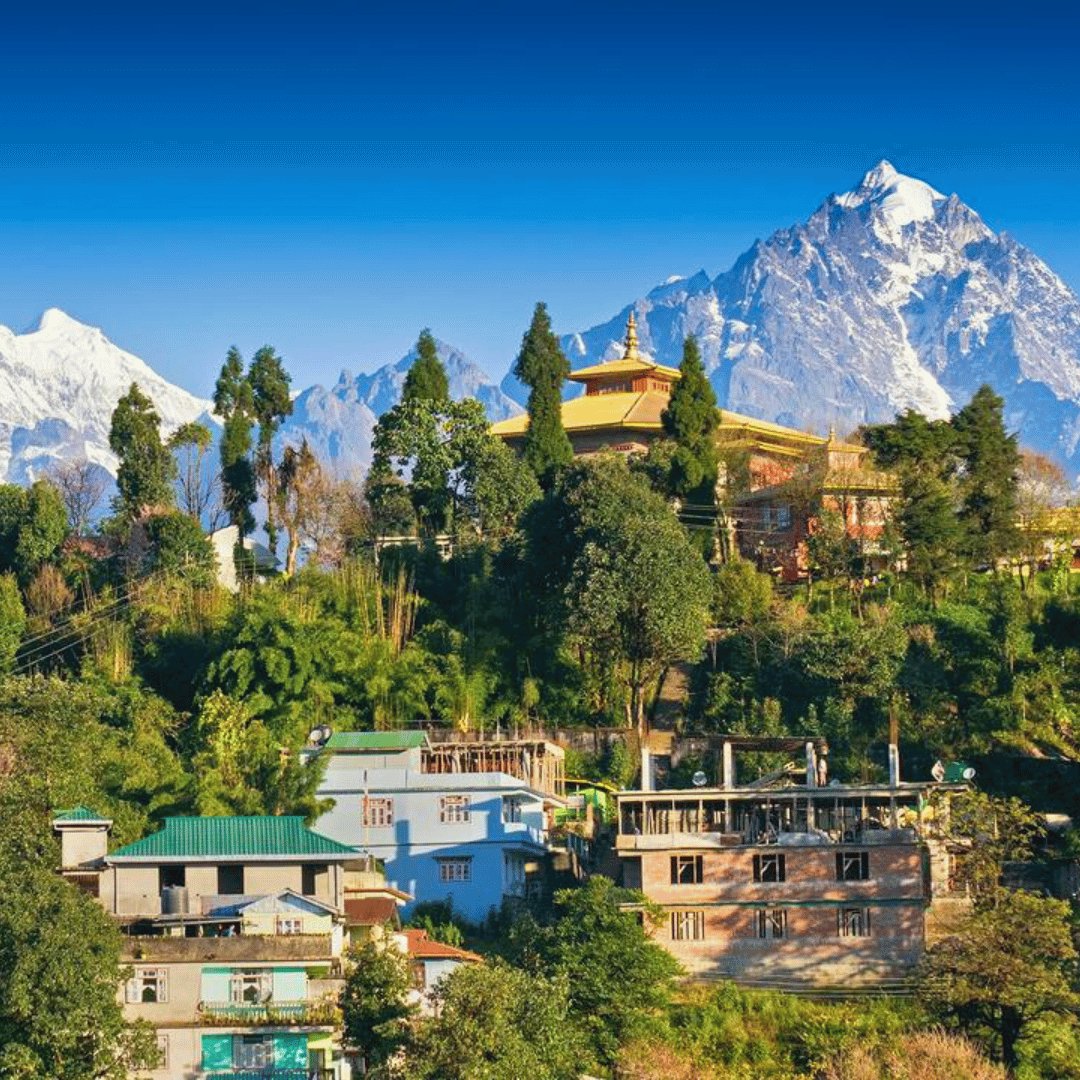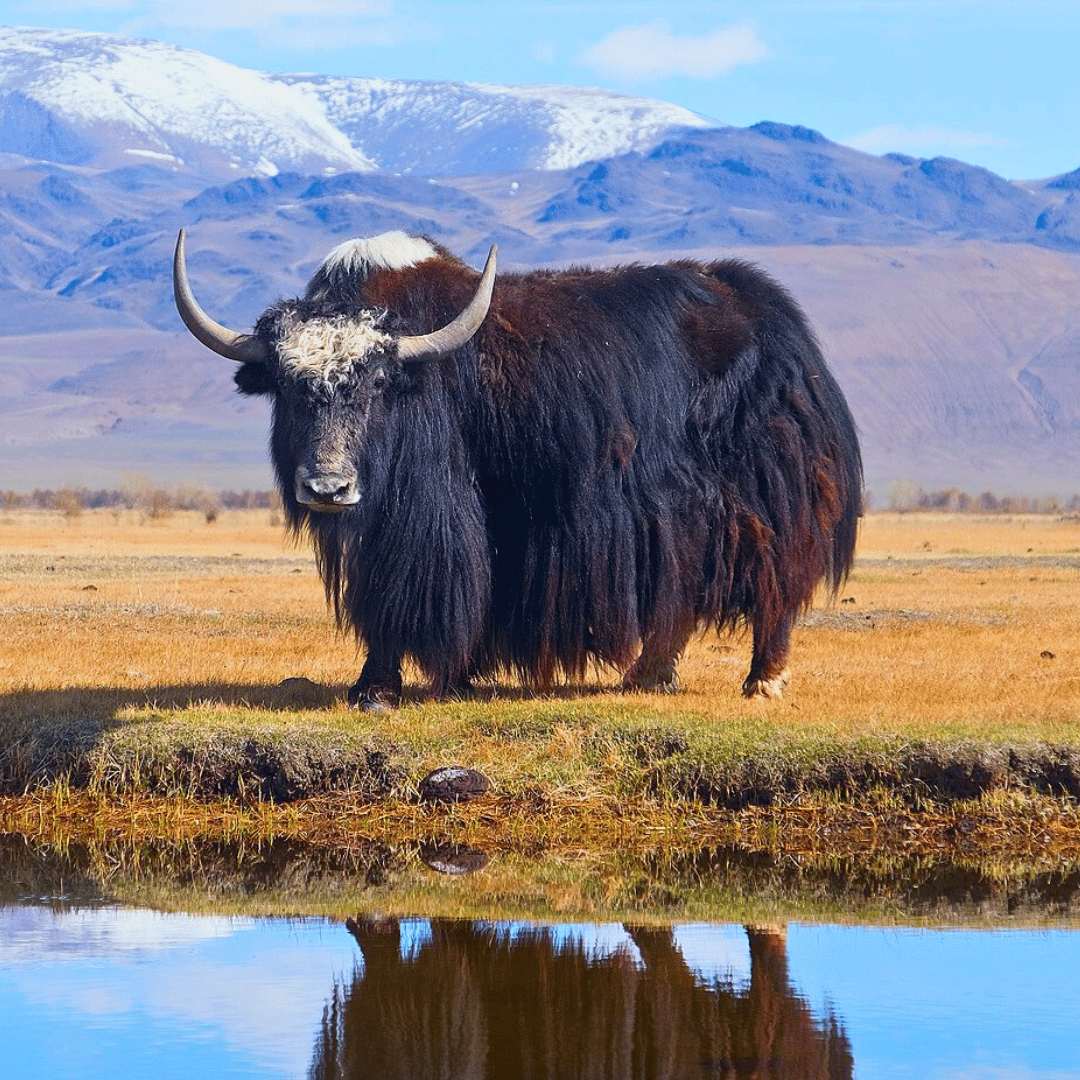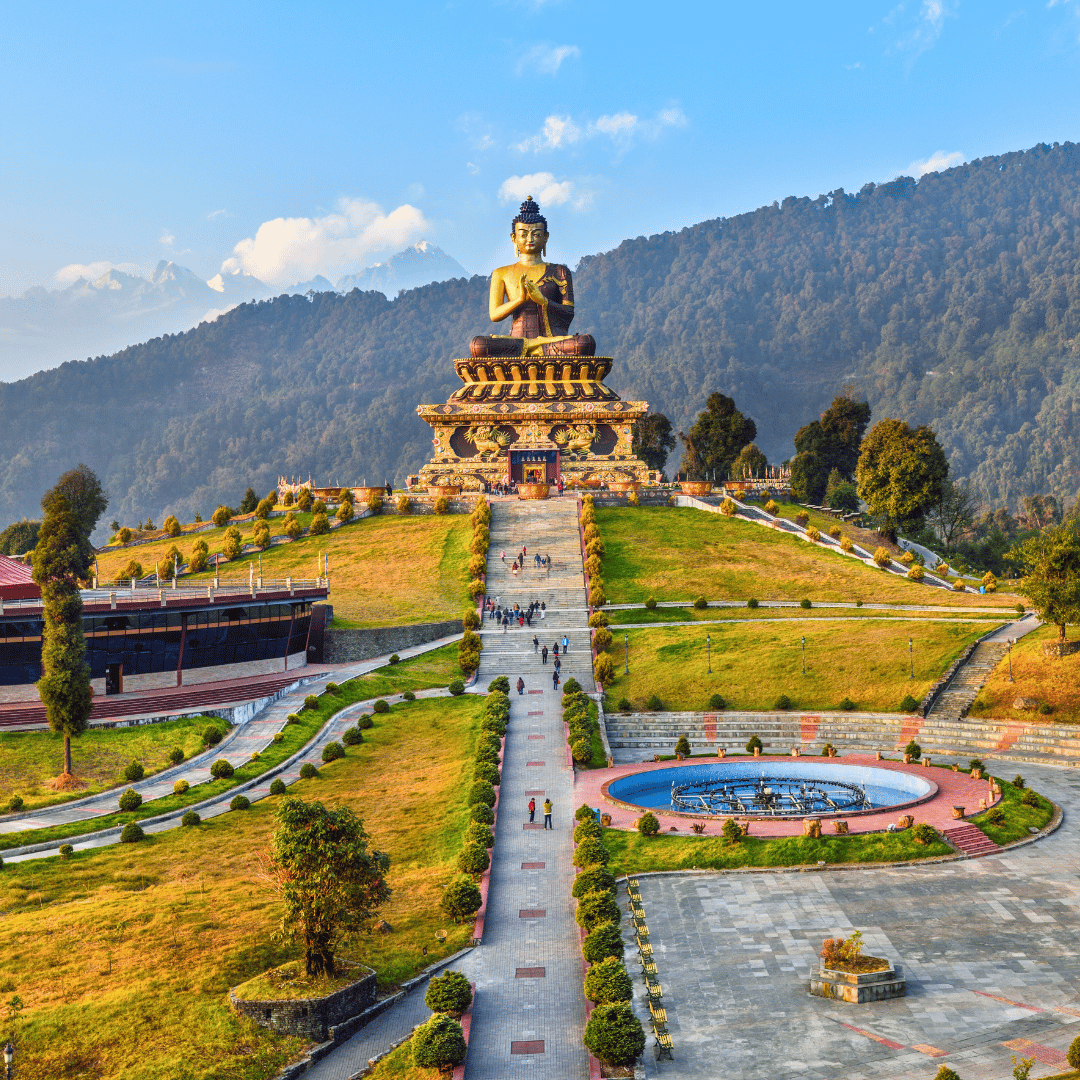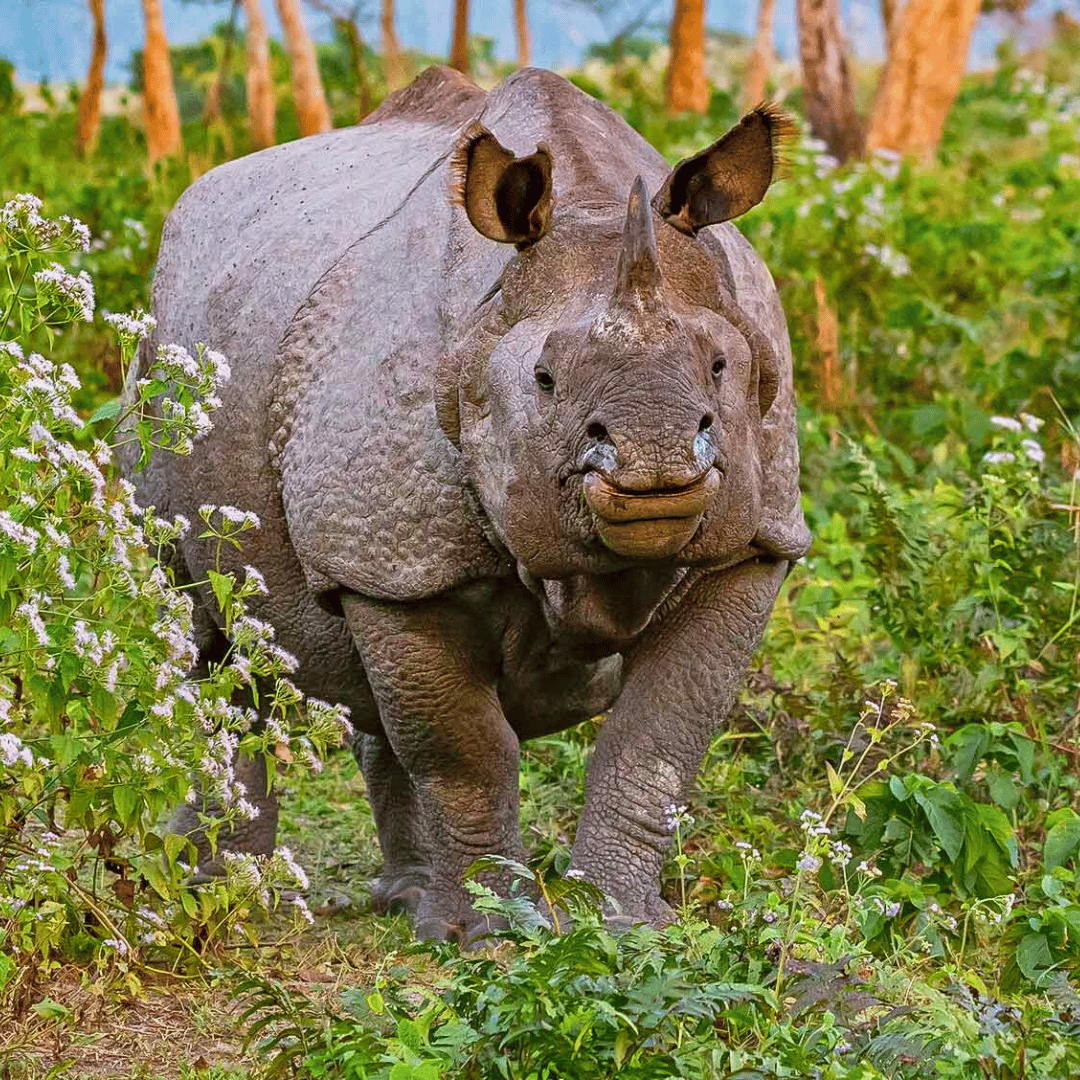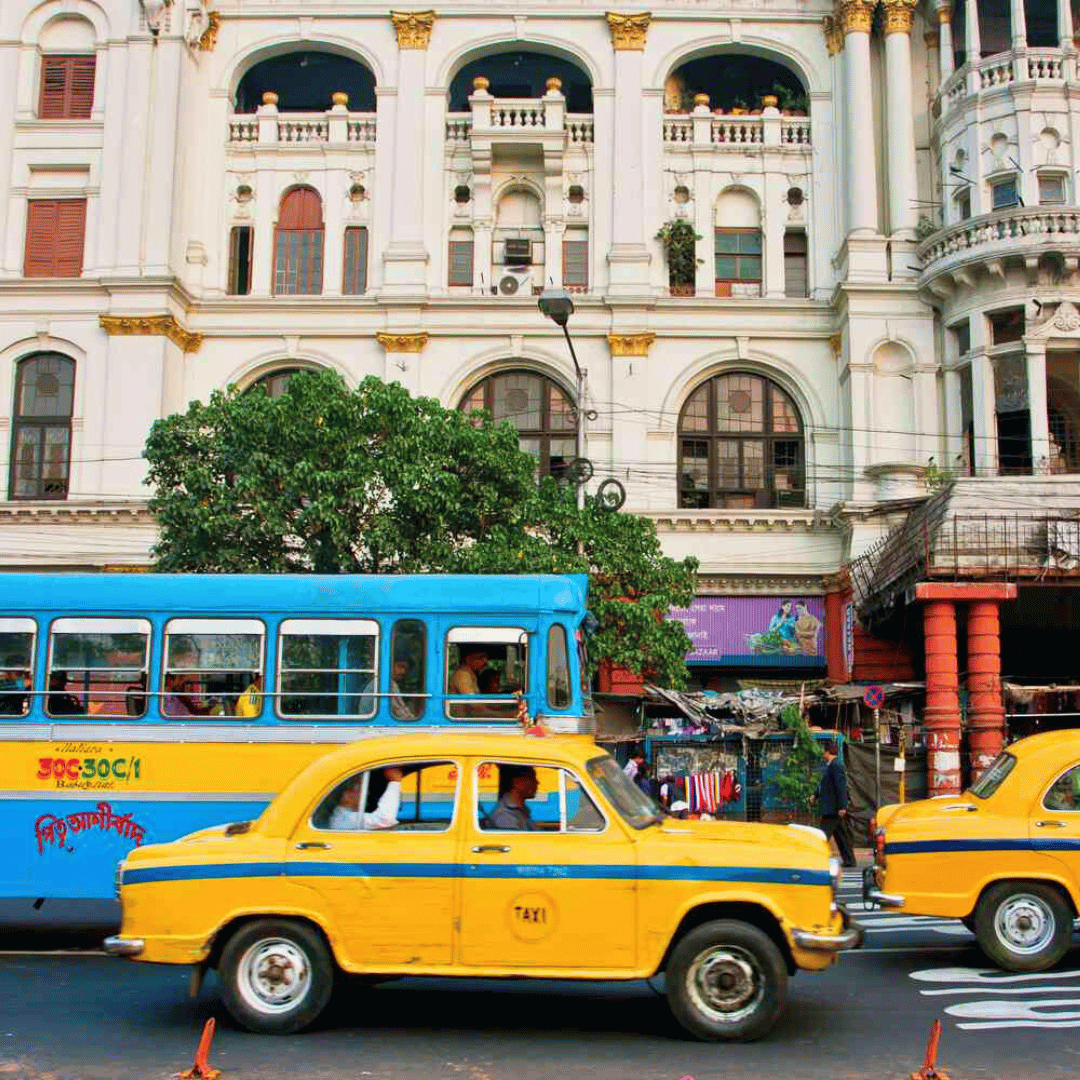North East India Tour Itinerary
-
Welcome to India. On arrival in Kolkata you’ll be met at the airport and transferred to the Fairlawn, your stunning heritage hotel for the next two nights. After your journey, the rest of the day is left open for you to relax, reset and ease into the rhythm of the city.
If you feel ready to step outside, the streets around Fairlawn are lively but manageable, with cafes, old bookshops and neighbourhood markets that offer an immediate introduction to Kolkata’s everyday pace. There is no fixed schedule today, and you’re free to explore gently or simply observe.
Kolkata, formerly known as Calcutta, was once the capital of British India and developed into a major centre of thought, arts and political life. That legacy is still felt not in grand displays alone but in conversations on street corners, literary clubs and classical music rehearsals heard drifting through open windows.
This is a city where the cultural life is lived rather than staged, where old colonial mansions sit beside centuries-old temples, and where intellectual energy and tradition remain part of daily experience. It rewards curiosity, patience and presence rather than speed.
Your guided journey begins tomorrow. For today, rest as you please, enjoy the atmosphere of the Fairlawn or take a gentle walk nearby - with no expectation beyond arriving and settling comfortably into North East India.
-
Begin your exploration of Kolkata today with a guided tour through some of the city’s most significant landmarks. This day offers an introduction not only to its architectural legacy but to the layers of faith, intellect and social reform that continue to shape Kolkata’s identity.
Your first visit is to the Victoria Memorial, an imposing marble structure that remains the city’s most recognisable landmark. Built in the early twentieth century, it blends classical European design with influences drawn from Mughal architecture, and invites comparison to both the Taj Mahal in Agra and Saint Pauls Cathedral in London. Inside, paintings, portraits and historical artefacts chart the height of British rule in India.
Continue to the Botanical Gardens on the western bank of the Hooghly River. Established in 1787 during the era of the East India Company, this vast estate is home to an extraordinary collection of botanical species gathered from across Asia and beyond. A standout feature is the famous two hundred year old Banyan tree, known for having one of the largest natural canopies in the world.
In the afternoon, visit the Mother Teresa of Calcutta Centre, which reflects the work of the Missionaries of Charity. The organisation continues to run homes for women, orphaned children, the dying, the homeless, those with AIDS and the socially marginalised, offering support without charge or discrimination of religion or caste.
Return to the Fairlawn where the evening is at leisure. Today has offered a glimpse of Kolkata through the lens of empire, nature, spirituality and service, with the deeper journey into North East India beginning in the days ahead.
-
Fly from Kolkata to Dibrugarh this morning on a short two hour flight and check in to your hotel on arrival, usually around late morning or midday. The afternoon is left open for you to rest after the journey or simply slow your pace and absorb the change in atmosphere. Assam carries a different rhythm to the rest of India, quieter and deeply tied to its river and agricultural life, and this is a gentle first encounter with it.
Towards the evening, you may like to take a relaxed walk through the nearby tea gardens. Moving past the long green rows of tea bushes and red earthen pathways, you begin to notice the quiet precision of daily work here. Tea is not just an industry but part of the visual and cultural identity of Assam, with generations of families connected to its harvest and process.
Dibrugarh is known as the Tea City of India, and the estates surrounding it have been central to its character since colonial times. What began as British enterprise has since adapted and evolved, and tea remains deeply interwoven with the economy and everyday rhythm of the region. It is not preserved as history but lived as daily reality.
The town sits on the banks of the Brahmaputra River, one of the widest and most powerful waterways in Asia. From its broad floodplains you gain an immediate sense of scale, as the land appears to stretch without boundary and the presence of the river is felt in agriculture, spiritual life and constant awareness of shifting seasons.
Dibrugarh also offers an early window into the cultural diversity of upper Assam. Assamese, Mising, Tai Ahom and other tribal influences shape the languages, architecture and agricultural practices of the region. It is a place of quiet continuity and lived heritage, an ideal beginning before your journey moves deeper into rural Assam tomorrow.
-
After breakfast, set out on a day excursion to Namphake village, located around one hour from Dibrugarh by road. The drive leads you through quiet rural Assam, passing tea gardens, bamboo groves and stretches of riverbank farmland that reflect the slower and deeply rooted way of life in this region.
Namphake is a Tai Phake settlement whose community traces its ancestry to South East Asia. The Tai Phake people migrated into Assam centuries ago, bringing with them distinct language, customs and Theravada Buddhist practice that remain carefully preserved to this day. Life here follows a rhythm shaped by tradition, spirituality and seasonal connection to land.
At the centre of the village stands a Buddhist monastery established in the mid nineteenth century. It is both a place of worship and a cultural archive, where rituals, manuscripts and devotion are maintained by the small monastic community. The quietness of the space invites observation rather than spectacle.
Traditional stilt houses, built in the architectural style of their South East Asian heritage, are raised above the ground to adapt to monsoon conditions. Locally known as chang ghars, they are constructed with bamboo and wood in a manner that is both functional and graceful. The surrounding river landscape heightens the calm atmosphere of the village.
Your visit to Namphake offers a valuable insight into the South East Asian roots present within the cultural fabric of Assam. Return to Dibrugarh in the late afternoon with a deeper appreciation of the layered identities that define this region of India.
-
Drive to Jorhat this morning, a journey of around three hours, with a stop along the way in the historic town of Sivasagar for guided sightseeing. The route moves through rural Assam, passing rice fields, water bodies and small settlements where traditional life continues largely unchanged.
Sivasagar, once known as Rangpur, served as the royal capital of the Ahom dynasty for nearly one hundred years. The Ahoms ruled Assam for close to six centuries, and their legacy is unusually well preserved in the temples, ceremonial structures and water reservoirs that still shape the town today.
Your visit includes the temple complex beside the large man made water tank known locally as Borpukhuri. Among the most striking monuments here is Sivadol, a temple dedicated to Lord Shiva, notable for its tall profile and the golden dome that crowns its peak. The surrounding Vishnudol and Devidol temples add further insight into the religious life of the Ahom era.
Nearby stands the Rang Ghar, a ceremonial pavilion once used for royal gatherings and public festivals. Its architecture, unlike most temple structures in India, reflects a blend of indigenous and Tai influenced design, and offers rare insight into pre colonial cultural expression in Assam. You may also view Talatal Ghar, a former royal residence with multiple levels and concealed passageways from a time when warfare strategy shaped construction.
Continue onwards to Jorhat in the afternoon and check in to your hotel on arrival. This town represents a gateway to both the cultural heritage of upper Assam and the wider landscapes of river islands and tea country that await in the days ahead.
-
Begin the day with an excursion to the Hoollongapar Gibbon Sanctuary, located around forty five minutes from Jorhat. The drive takes you through Assam’s tea country, where dense green plantations stretch across gentle landscapes before giving way to a pocket of protected forest unlike the surrounding cultivated land.
The sanctuary is best known as the habitat of the Hoolock Gibbon, India’s only ape species, which moves through the forest canopy rather than on the forest floor. The dense evergreen environment is also home to the Bengal Slow Loris and other rare primates, making this one of the most important biodiversity zones in North East India. The setting feels quiet and enclosed, with sounds of birds and movement above rather than around you.
Return to Jorhat for a guided introduction to the town in the afternoon. Jorhat is one of Assam’s key cultural centres and has long served as a gateway between the Brahmaputra valley and the highland communities of Nagaland. It takes its name from two historic river markets that once operated along the Bhogdoi River, and its identity remains grounded in trade, agriculture and learning.
The region holds deep connection to the Ahom dynasty, which ruled Assam for nearly six hundred years. Jorhat was the last capital of their kingdom, and its influence can still be felt in the music, literature and temple architecture preserved in and around the town. These traditions are not preserved for tourism but continue as part of daily life.
Towards the evening, you may visit nearby tea plantations to see first hand the rhythm of tea cultivation as workers conclude the day’s harvest. The landscape at this hour is at its most atmospheric, with soft light settling over the fields and the cadence of local life slowing as the day comes to a close.
-
Take a morning ferry across the Brahmaputra River to Majuli, the largest inhabited river island in the world. The journey itself is an experience, as the wide expanse of water gives a sense of Majuli’s scale and the isolation that has helped preserve its distinct cultural identity. On arrival, check in to your accommodation and enjoy the remainder of the day at leisure.
Majuli is considered the cultural heart of Assam, known for its monasteries, river based life and strong artistic traditions. It is home to various tribal and non tribal communities, with the Mishing people being one of the most prominent. Life here is deeply shaped by the river’s ecology and seasonal moods, with agriculture, handloom weaving and devotional art forming the basis of daily rhythms.
The island is best known for its Satras, Vaishnavite monasteries established in the fifteenth and sixteenth centuries that continue to serve as living centres of spiritual practice, music and performance. Monks here keep alive traditions of devotional storytelling, mask making and dance that are passed down through oral training rather than written record.
Majuli is also known for its weaving culture, where looms are found within the homes of local families rather than in commercial workshops. The skill is inherited through generations, with dyes often drawn from local plants and textiles produced for ceremonial as well as everyday use. Each village expresses its own variation of pattern and technique.
The rest of the day is free to walk, observe or simply absorb the atmosphere of the island at your own pace. Sunset on Majuli is especially striking, as the light falls across the river and the landscape takes on a stillness that reflects the quiet, enduring spirit of this place.
-
Spend today exploring Majuli in the company of a local guide, gaining deeper insight into its living traditions and community life. Unlike many destinations, Majuli is not encountered through monuments but through living culture, where art, agriculture and spirituality are completely interwoven into daily rhythm.
Begin by visiting Mishing tribal villages, where homes are built on stilts to adapt to the river’s seasonal flooding. The Mishing community is known for its weaving tradition, with looms found inside family homes rather than in workshops. Each garment carries unique motifs that signify identity, season and ceremonial purpose, passed down through generations with no written patterns.
Weaving is not practiced for commercial tourism here but as a living necessity and form of cultural expression. Your time in the village offers the opportunity to observe the process up close, speak with the women who master these techniques and gain a deeper understanding of how knowledge is preserved through practice rather than institution.
Majuli is also renowned for its Satras, Vaishnavite monasteries where devotional art is sustained in the form of dance, music and mask making. Visit one of these Satras to meet artisans who create expressive masks used in religious storytelling performances. Their work is not decorative but spiritual, created with intention and ritual precision.
Depending on local schedules, you may witness a masked performance or quiet rehearsal, offering a rare look into how performance here is inseparable from devotion. Return to your accommodation in the late afternoon, with the evening at leisure to reflect on the depth and continuity of Majuli’s cultural life.
-
After a leisurely breakfast, board the morning ferry from Majuli back to Nimati Ghat on the mainland. The crossing once again reveals the vastness of the Brahmaputra, where river and sky often appear to merge into a single horizon. On arrival, you will be met and driven to Kaziranga, a journey of approximately two and a half hours through changing rural landscapes.
Arrive at your lodge near Kaziranga National Park and check in. The remainder of the afternoon is at leisure, allowing you time to settle in and absorb the shift from river island to wildlife territory. The park environment contrasts sharply with Majuli, offering a landscape of tall grasslands, forest cover and wetlands that support some of India’s greatest biodiversity.
Kaziranga is a UNESCO World Heritage Site and one of the most successful conservation efforts in India. It is best known for being home to the largest population of the one-horned rhinoceros, a species once critically endangered due to poaching. Efforts over the past century have allowed their numbers to recover within this protected habitat.
The park is also inhabited by Indian elephant, wild buffalo, swamp deer, hog deer, sambar, wild boar, hoolock gibbon and a range of other mammals, along with a significant presence of tiger, though sightings are rare due to the density of vegetation. Reptile life and birdlife are equally rich, with winter months attracting large numbers of migratory species.
As dusk approaches, the sounds of the park begin to intensify, with bird calls and subtle movement in the grasslands signalling the transition from day to evening. Dinner is at your lodge tonight, where you may wish to rest ahead of your first safari experience tomorrow.
-
Begin the day with an early morning jeep safari in Kaziranga National Park, entering the grasslands at first light when wildlife activity is at its peak. The landscape feels primal at this hour, with mist rising from the wetlands and the movement of birds and animals gradually emerging from the tall elephant grass.
Kaziranga is one of the most important wildlife habitats in India, especially known for its population of the one-horned rhinoceros, often seen grazing close to the water. You may also encounter wild elephant, swamp deer, buffalo and a wide variety of birdlife, along with the possibility of more elusive species hidden within the forested areas.
Return to your lodge late in the morning for breakfast and time to rest. The middle hours of the day are quiet in the park, and this pause allows you to experience the slower rhythm of life around the lodge, which may include views over the forest edge or nearby wetlands.
Head back into the park in the late afternoon for a second safari, when the light begins to soften and wildlife becomes active once again. Each safari in Kaziranga reveals a different dimension of the park’s ecosystem, shaped by seasonal water levels, grass height and the instinctive movements of its animal inhabitants.
Return to your accommodation at dusk. The evening is at leisure, with dinner served at the lodge, and an opportunity to reflect on this rare and intimate encounter with one of India’s most remarkable conservation landscapes.
-
Begin the day with one final jeep safari in Kaziranga, entering a different zone of the park for a deeper exploration of its forest and grassland habitats. This morning offers a chance to observe the park in a different light, with changing animal movement and shifting atmosphere as the day begins.
Return to the lodge for breakfast, then depart by road for Shillong, a journey of approximately five and a half hours. The drive gradually leaves the floodplains of Assam and rises into the hills of Meghalaya, where the landscape becomes cooler, greener and more elevated, with a noticeable shift in climate and vegetation.
Arrive in Shillong and check in to your hotel. The rest of the day is at leisure to rest after the journey, or simply take in the change of environment. Known for its pine covered hills, colonial era architecture and long history as a hill retreat, Shillong carries an atmosphere distinct from the plains of Assam.
Shillong was once the capital of British administered Assam and is now the capital of the state of Meghalaya. The town is surrounded by valleys, forests and waterfalls that form part of a landscape shaped by heavy monsoon rain and dramatic elevation changes across short distances.
You may wish to take a short walk near your hotel in the evening, or simply relax and enjoy the cooler air after the heat of the lowlands. Your exploration of Shillong and the surrounding region continues tomorrow.
-
Spend the day exploring Shillong with a local guide, beginning with a visit to Ward’s Lake, a scenic colonial era landmark popular for gentle garden walks and paddle boating. The calm setting offers an easy introduction to the town before continuing onward to other key points of interest.
You may then visit the Botanical Garden, which features a variety of indigenous and exotic plant species, including a notable collection of orchids. Nearby is Lady Hydari Park, a Japanese influenced garden with walking paths, manicured flower beds and a peaceful layout that reflects the town’s long tradition of landscaped green spaces.
Shillong is also known for its historic golf course, considered one of the oldest and most scenic in Asia. Set within a natural valley surrounded by pine groves and rhododendron trees, it reflects the town’s long standing identity as a hill retreat during the British era. A visit to the State Museum offers further insight into the cultural history of Meghalaya and the traditions of its Khasi, Garo and Jaintia communities.
Alternatively, if you prefer to spend the day immersed in nature rather than within the town, you may take a day excursion to the surrounding countryside to visit one of Meghalaya’s famous living root bridges. These remarkable structures are formed over decades by guiding the aerial roots of rubber trees across streams, gradually strengthening into natural walkways used by local communities. The experience involves light walking through forest paths, passing traditional Khasi villages and river valleys shaped by time and monsoon rainfall.
Return to your hotel in Shillong towards the evening. Whether you choose to explore the town’s heritage or experience the extraordinary natural engineering of the living root bridges, today offers two distinct ways to understand the landscape and culture of Meghalaya.
-
Drive to Guwahati this morning, a journey of around three hours that gradually leaves the hills of Meghalaya and descends into the broad floodplains of Assam. On arrival, check in to your hotel and enjoy the rest of the day at leisure to rest or take a gentle walk nearby if you wish.
Guwahati is the largest city in Assam and lies directly on the banks of the Brahmaputra River. Its energy is immediate, with river life, trade activity and centuries of spiritual tradition intersecting in a way that feels deeply rooted rather than recently developed. It serves as an important gateway between the northeastern states and the rest of India.
The city is home to several important temples, including Kamakhya Temple, one of the most significant centres of Shakti worship in India. Situated on a hill overlooking the river, it is a place of continuous pilgrimage and living ritual, rather than a monument preserved for visitors alone. Navagraha Temple, dedicated to the nine celestial bodies, reflects the city’s long historical connection to astronomy and sacred belief.
Away from the spiritual centres, Guwahati reveals its character through markets, river ghats and everyday neighbourhood life. It is both commercial and cultural, shaped by trade, river connectivity and migration within Assam and beyond. Its scale and pace offer a striking contrast to the quieter towns earlier in your journey.
The remainder of the day is open for rest. You may simply choose to observe the changing light over the Brahmaputra, or explore nearby streets at your own pace, allowing the atmosphere of the city to reveal itself slowly rather than through fixed landmarks.
-
Spend today exploring Guwahati with a local guide, beginning with an introduction to its most significant cultural and spiritual landmarks. Depending on the flow of the day, this may include a visit to Kamakhya Temple or quieter riverfront ghats where ritual and daily life unfold side by side. As the largest city in Assam, Guwahati offers a revealing contrast between sacred tradition and modern urban movement.
Later in the day, travel to the village of Sualkuchi, located around thirty kilometres north of the city along the banks of the Brahmaputra River. Known as the textile centre of Assam, Sualkuchi has been a major hub of silk weaving for generations, with family homes functioning as active workshops where traditional techniques continue to be practiced.
Assam is known for three distinctive varieties of silk, including the naturally golden Muga silk, the fine white Pat silk often used for ceremonial attire, and the warm textured Eri silk traditionally worn in cooler months. Each fibre is cultivated, harvested and woven entirely by hand, with knowledge preserved through lived tradition.
In Sualkuchi, weaving is not a staged demonstration but part of everyday life. You will have the opportunity to observe the full process, from thread preparation to loom weaving, and speak with artisans whose skills are passed on within the family rather than through formal institutions.
Return to Guwahati in the late afternoon or early evening. The remainder of the day is at leisure, offering time to rest or to take in the atmosphere of the Brahmaputra riverfront before your onward departure tomorrow.
-
After breakfast, you will be transferred to Guwahati Airport for your flight to Kolkata. The flight is approximately one and a half hours, offering a final aerial view of the Brahmaputra River and the plains of Assam.
On arrival in Kolkata, you will be assisted with the connection to your onward flight. Depending on your international or domestic schedule, there may be a short layover or a direct same day departure.
This marks the conclusion of your journey through North East India, a region experienced not through a single landscape but through river islands, tea country, forested wildlife zones and highland cultural centres.
Over the past days, you will have encountered distinctive traditions, monasteries, living craft communities and the habitat of the one-horned rhinoceros, gaining a layered understanding of this part of India.
We trust the journey has been meaningful and leaves you with a lasting connection to the people, environments and living heritage of North East India. Safe travels!
The India Unbound Difference
At India Unbound, we’ve spent twenty years on the ground in India, learning all about its intricacies, landscapes and cultures. We use this first-hand knowledge to carefully curate travel itineraries for our guests, and are proud to be a reputable private touring specialist. In addition, our team of local partners offer guarantees of punctuality, quality and service. All of our India private tour itineraries include all accommodation mentioned, daily breakfasts and other meals as specified, all transfers, touring and sightseeing by air-conditioned Toyota Innova or similar vehicle, and internal flights as outlined in the itinerary. Private activities and sightseeing with English-speaking local guides are included, along with entrance fees, drinking water in the vehicle, and all vehicle-related charges such as tolls, parking fees, and taxes. The cost does not include visas or international flights, personal expenses such as drinks and laundry, meals and activities not specifically listed as included, or camera fees, which are rarely applicable. Prices are listed in Australian dollars and are based on per person, twin share. Please note that these may fluctuate depending on the time of year you’re looking to travel, and the type of accommodation you prefer.


